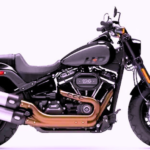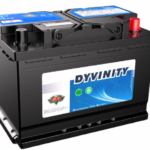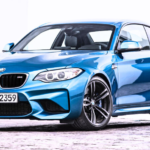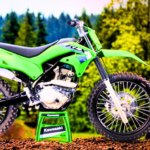The Renault 12 Sedan is more than just a car. It’s a timeless classic that combined practicality, affordability, and durability. First launched in 1969, this sedan became one of Renault’s most successful global models. Even today, it continues to hold a special place in the hearts of car enthusiasts and collectors.
This blog takes you through the history, design, performance, and global influence of the Renault 12 Sedan, along with reasons why it still matters today.
History of the Renault 12 Sedan
The Renault 12 Sedan was unveiled at the 1969 Paris Motor Show. Renault wanted to create a car that could perform well across diverse markets – from smooth European highways to rugged South American terrains.
Why it became popular:
- Affordable pricing made it accessible to families.
- Reliable engineering meant fewer breakdowns.
- Sturdy construction allowed it to last for decades.
By the mid-1970s, the Renault 12 Sedan was being produced in multiple countries including France, Spain, Turkey, Argentina, and Romania.
Design and Styling
The Renault 12 Sedan had a boxy yet elegant look. It was simple, functional, and easy to maintain – qualities that made it a hit worldwide.
Exterior Highlights:
- Clean front grille with chrome details
- Round or rectangular headlights depending on the model year
- Aerodynamic body compared to older sedans
- Sturdy steel frame built to withstand rough use
Interior Features:
- Spacious cabin with seating for five
- Durable upholstery and trims
- Simple dashboard with analog dials
- Practical storage space for families
While not luxurious, the Renault 12 Sedan was built for comfort and reliability.
Engine and Performance
Under the hood, the Renault 12 Sedan came with a range of small but efficient engines.
Key Specs:
- Engine options: 1.3L, 1.4L, and 1.6L inline-four engines
- Horsepower: Around 54–80 HP depending on the variant
- Top speed: Up to 145 km/h (90 mph)
- Transmission: 4-speed manual (later models got 5-speed)
- Fuel economy: 12–14 km/l, impressive for its time
The car wasn’t built for speed, but for everyday usability. It was reliable, fuel-efficient, and easy to repair – qualities that made it a people’s favorite.
Renault 12 Sedan Variants
Renault produced several versions of the 12 Sedan to suit different markets.
- Standard Sedan (Berline) – The original and most common version
- Estate/Wagon (Break) – Larger cargo space for families
- Luxury Trims – Featured extra chrome, better interiors, and added comfort
- Regional Variants – Sold under different names, such as the Dacia 1300 in Romania
This flexibility allowed the Renault 12 Sedan to meet the needs of diverse buyers across continents.
Global Impact
The Renault 12 Sedan wasn’t just a European success. It was a true global car.
- France and Europe – Popular as a family sedan competing with Fiat and Ford models
- Romania – Became famous as the Dacia 1300, produced until 2004
- South America – Hugely successful in Argentina and Brazil as both a family car and government fleet vehicle
- Africa and Middle East – Valued for durability in hot, rugged conditions
Its worldwide production and adaptability cemented its place in automotive history.
Renault 12 Sedan in Motorsports
Although designed as a family car, the Renault 12 Sedan also found its way into local racing. In countries like Argentina and Turkey, modified versions were used in rallies and endurance races. Its lightweight frame and reliable engine made it suitable for amateur motorsport enthusiasts.
Why the Renault 12 Sedan is Still Loved Today
Even after decades, the Renault 12 Sedan remains popular among collectors and classic car fans.
Reasons for its lasting charm:
- Simplicity – Easy to repair and maintain
- Classic design – A nostalgic reminder of the 70s and 80s
- Cultural symbol – Known as “the people’s car” in many regions
- Restoration projects – Many enthusiasts restore old Renault 12 Sedans with modern upgrades
Modern Interpretations
With the rise of retro-inspired cars, the Renault 12 Sedan could inspire a modern revival. A redesigned version could feature:
- Hybrid or electric powertrain
- Advanced safety features (ABS, airbags, lane assist)
- Digital infotainment system
- Eco-friendly materials inside the cabin
Such a comeback would blend classic charm with modern technology.
Common Issues to Know
The Renault 12 Sedan was reliable, but like any classic car, it had a few weaknesses.
- Susceptible to rust in humid climates
- Lacked modern safety features
- Limited speed and power compared to modern sedans
Despite these issues, the Renault 12 Sedan’s durability and affordability kept it alive for decades.
Buying a Renault 12 Sedan Today
If you’re planning to buy a Renault 12 Sedan today, here are some tips:
- Check for rust – Especially on the floor panels and wheel arches
- Look for original parts – Easier to maintain authenticity
- Join classic car clubs – To find restoration advice and spare parts
- Budget wisely – Prices vary from cheap fixer-uppers to expensive, fully restored classics
Final Verdict
The Renault 12 Sedan remains one of the most influential family cars in automotive history. It wasn’t flashy or powerful, but it was reliable, practical, and built for everyday people. Its global reach – from France to South America and Romania to Africa – shows how versatile and adaptable it was.
Today, it stands as a cultural icon, beloved by classic car enthusiasts and collectors. Whether as a restored vintage model or a potential modern revival, the Renault 12 Sedan continues to inspire admiration.
If you love cars that combine history, simplicity, and durability, the Renault 12 Sedan is a name you’ll never forget.






